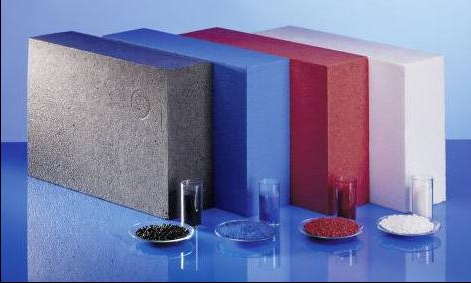The use of polystyrene as a heat-insulating material is widespread due to its unique properties. This served as the basis for increasing demand for it. However, to create a cost-effective enterprise, you should choose equipment for the production of polystyrene and choose the optimal technological scheme.
Manufacturing technology
Currently, there are several technologies for manufacturing polystyrene products that are fundamentally different from each other. The first is to pressure the monomer to produce polystyrene. Passing through a special nozzle, a large product is obtained, which is the main disadvantage. After cooling, it is necessary to perform cutting, resulting in a large amount of waste.

The second method is more technologically advanced and can be used for industries with a small volume of products. Monomer polarization can occur by pretreatment. In the first stage, the raw material is exposed to temperature from 90 ° C with a gradual increase in indicators to 200 ° C.
During the mixing process, a monomer conversion reaction takes place. After that, the mass is filtered using column-type apparatuses, as a result of which the remainder of the unused reagent is removed.
The result is a one-piece product that has good thermal insulation, mechanical strength and relative ease of processing.
Raw material processing
At the first stage of production planning, it is necessary to determine the methodology for processing raw materials. The base used is a monomer for the production of polystyrene, consisting of styrene. It all depends on the final product, which is divided into 2 main types:
- Polystyrene sheet. It is used for the production of containers, packaging, car parts.
- Foamed. Used for the manufacture of insulating materials.
Currently, granular polystyrene products are widely used. It is obtained by suspension polymerization. When water acts on the monomer and the addition of emulsion stabilizers, a semi-continuous production process occurs.

As a result, granules are obtained, which can be further processed by gas-filling compounds. This technology makes polystyrene for the production of foam. Depending on the selected technology of exposure to the granules, a heat-insulating material of various densities and sizes can eventually be obtained.
Equipment
For practical implementation, special equipment for polystyrene production will be required. Since it is necessary to establish a complex production process for sheet products, it is recommended to focus on the manufacture of foam materials - polystyrene.

At present, the starting material — polystyrene suspension foaming (PVA) —is manufactured by several Russian enterprises. This is a complex production process, and each of the lines is a unique set of equipment designed and manufactured according to individual projects. It is economically viable to purchase raw materials directly from manufacturers.
Machines for the production of polystyrene differ depending on the selected technology of manufacturing the material. Currently, two methods are common: block and pressing. Despite the use of one type of raw material (PVA), each of them has its own characteristics.
Preparation process
In the first stage, polystyrene granules must be sorted according to fractions. The uniformity of the future product will depend on this. Then they are placed in a line for pre-foaming.

In it there is a thermal effect on the granules, as a result of which the gas contained in them expands. The increase in size should occur in several stages, otherwise the probability of rupture of the outer shell of the granule is high.
The initial temperature of thermal exposure is 85 ° C. A gradual increase leads to the formation of a homogeneous mass. Its further processing depends on the chosen manufacturing method. The maximum temperature for preheating can be 205 ° C. If this figure is exceeded, it is likely that the raw materials for the production of polystyrene will ignite.
Then the heated mass passes the final processing.
Block way
This technology is one of the simplest, since it does not require additional processing of the feedstock. The heated mass through the conveyor line enters the aging unit. There she must stay from 12 to 24 hours, depending on the operational characteristics of the material obtained. During this time, the pressure stabilizes inside the granules.

Then the cooled mass enters the molding machine. In it, without external pressure, the product blanks are formed. After final cooling with a cutting machine, the material takes on its final shape.
Due to its unique properties, the resulting expanded polystyrene has a minimum moisture absorption coefficient, a high coefficient heat transfer resistance. However, a small specific gravity makes the product brittle. Therefore, during storage and transportation, special protective packaging should be provided.
Extrusion
If you want to create a product with high density and mechanical strength, you need to use a different manufacturing method. For this, equipment is purchased in which the heated mass of polystyrene under pressure passes through molds - dies. Thus, it is possible to adjust the specific gravity of the final product, its mechanical strength.
After the workpiece is processed with cold air and enters the cutting line. This stage almost completely coincides with that for the block method for producing expanded polystyrene.
When choosing equipment, you should pay attention to its performance, purchase price and energy consumption. These parameters are the main ones in calculating the cost of future products.








